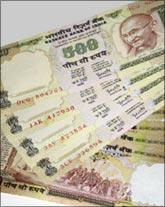 For long, savings accounts have been the sole source of savings option for individuals across the country, despite the low rate of interest offered at 3.5 per cent!
For long, savings accounts have been the sole source of savings option for individuals across the country, despite the low rate of interest offered at 3.5 per cent!
The reason for this is that the money in your savings account is liquid cash. You could use it for day-to-day transactions, to pay your bills, EMIs, and the list is endless.
On the other hand you have the fixed deposit that gives you a higher rate of interest say at 8 per cent but cannot offer you liquid cash. In other words your money will be locked for a particular period of time and you will have no access to it during the agreed period.
How about some facility that would give you the best of both worlds, the liquidity of a savings account and the interest rate of a fixed deposit? Auto-sweep facility does exactly this.
What is auto-sweep facility?
Also called flexi-deposit scheme and by different other names by different banks, auto sweep facility allows you to fix a pre-determined amount for your savings account the excess of which will be automatically transferred to a fixed deposit or FD.
This could help you get a higher rate of interest on the transferred amount. Withdrawal is also made simple as these FDs are broken and it operates like a normal savings account. Some banks also offer to deposit the excess amount in mutual funds or money markets.
How does it work?
Some banks prefer not to publicise the option of auto-sweep facility to its customers. The reason could be that the banks prefer to have high CASA ratio that is the Current Account/Savings Account ratio, which would help them reduce their cost of deposits and increase their net interest income.
Also, the auto-sweep facility is called by different names in different banks hence it is important that you talk to your bank to activate it, if you want to.
- The way an auto-sweep facility works is fairly simple. First you should decide on three things: one, the maximum amount you want to hold in your savings account which in banking terminology is called the threshold limit.
- Two, you decide the FD amount; and
- Three you decide the tenure of the FD. Once these three steps are done technology comes into play to do according to your instructions.
For example, you deposit an amount of Rs 30,000 in your auto-sweep enabled savings account on September 1, 2008. The minimum amount to be maintained in a savings account by your bank is Rs 5,000. This differs with banks.
You fix the threshold limit at Rs 10,000. Hence, the remaining Rs 20,000 will go into a newly created fixed deposit account in your name that will give you a higher rate of interest say 8 per cent per annum.
So effectively your savings account now has Rs 10,000. And you have Rs 20,000 in your FD. Plus, you will be required to maintain a minimum balance of Rs 5,000 in your savings account.
One year later on October 1, 2009 you want to withdraw say Rs 15,000 from your account which now has only Rs 10,000.
Also, your bank will require you to maintain a minimum balance of Rs 5,000. Hence, effectively, you can withdraw only up to Rs 5,000 from your savings account.
Under the auto-sweep facility, the remaining Rs 10,000 required by you to withdraw could be taken from your fixed deposit account. This is called sweep-out or reverse-sweep.
Now your FD is reduced to Rs 10,000. However, you would continue to earn 8 per cent on this amount. And even if you want to withdraw the entire deposit say after 7 months, you would still get interest for 7 months at the prevailing rate of interest.
This will be higher than the 3.5 per cent interest your savings account will give you.
Pros and cons of auto-sweep facility
Auto-sweep facility offers you the best of both worlds -- the liquidity of a savings account and the higher interest rates of a fixed deposit.
This facility is highly suitable for salaried people who cannot afford to keep huge amounts as fixed deposits and at the same time want their unused funds in their savings accounts to attract a higher rate of interest.
Apart from its obvious advantages, auto-sweep facility has its own disadvantages. Some banks prefer to maintain the fixed deposit for some period of time, say, 1 year and 1 day.
In such cases, the premature withdrawal of the FD amount would attract a penalty on the interest rate offered on such deposits.
Auto-sweep deposits differ from traditional fixed deposits where the banks calculate cumulative interest. In auto-sweep facility, your bank might calculate only simple interest.








